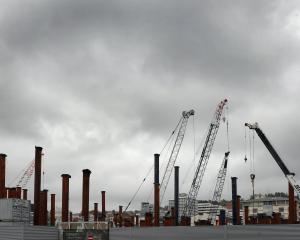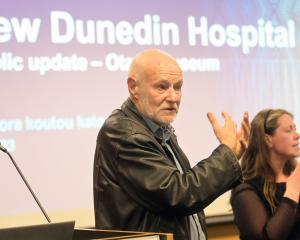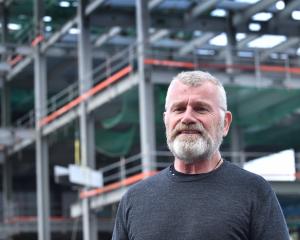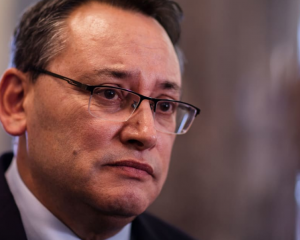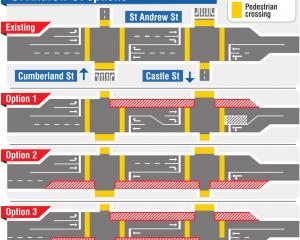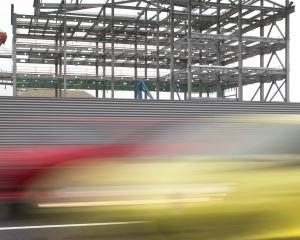
The Covid-19 lockdown struck quickly. It stopped the demolition of the new Dunedin hospital site overnight, and the project management office in Castle St quickly emptied of project managers.
The Southern DHB became the nation’s initial hotspot for the disease, and contact tracing was the first priority for all and sundry.
But a good deal of work on the new hospital persisted, largely unaffected.
The planning and design continued, even though some of the architects and health planners in the design consortium worked from Australia. The ongoing consultation with clinicians and hospital management on design matters was able to continue, even as those same people were dealing with the prospect, then the reality, of Covid-19.
It is a good time to place on public record our thanks to all the clinicians, managers and the Board of the Southern District Health Board, and also to the Ministry of Health. It would have been easier to say that planning and training for a forthcoming pandemic meant that all hospital design should cease. But workarounds, compromises and additional commitment prevailed. The design work continued, and delays to the programme were therefore minimised.
That said, the pandemic does alter a few things. There is new uncertainty in society. Some construction businesses and subcontractors will remain strong while others may falter. Our university and polytech, integral partners in the new hospital, have taken a financial hit. Some key experts cannot enter the country to help us just yet. Unemployment will increase, perhaps a lot.
And there are open questions about whether the pandemic alters the future of health services delivery and therefore hospital design.
Against that uncertainty some things are becoming more certain. The reason is that the basic hospital design has begun to mature and the list of unsettled issues is starting to shrink. But only slowly. Hospitals are complex buildings which is why they are typically designed in five stages. The complex will be subject to design change almost until it opens, but to an ever diminishing extent.
The new hospital will comprise two buildings either side of St Andrew St and have a gross floor area of about 88,000-89,000sq m. This compares with the just over 70,000sq m in the existing facility, though slightly less than the 93,000sq m approved in the "indicative business case" by the previous Cabinet.
This size difference between the present and future hospitals does not mean a lot more general ward beds. General bed numbers will be quite similar. Instead, the size difference will be due to more surgical theatres, a bigger emergency department, more specialist intensive care beds and more high-dependency beds. Roughly, they all double.
Then, in addition, there will be more space for "travel and engineering" which means room for corridors, lifts, machinery, heating, ventilation and air-conditioning systems and the like. This is worth emphasising because it is part of the reason the existing hospital struggles. There is not always space to run an extra water or gas pipe, or a ventilation duct, or to readily service existing equipment.
The size of the existing emergency department [ED] has been an issue for many years. There are currently 28 ED beds; the new hospital will have 53 ED beds. To improve effectiveness and reduce wasted time, there will be an assessment and planning unit next to the ED. This is where many patients will be assessed and diagnosed, perhaps over a day or so. Then they will be admitted to the most appropriate ward — or indeed might be discharged after observation, thus avoiding unnecessary admission.
The current hospital has just expanded its intensive care facility and now has a total of 22 intensive care unit [ICU] and high dependency unit beds, up from 12 ICU beds a year or so ago. The new hospital will have a total of 30 such beds when it opens, with an ability to expand to 40 beds if needed. This seems to make a lot of sense in light of Covid-19, but there are other reasons too for ensuring a significant increase. Perhaps the most common one is that complex elective surgery can often become delayed if there are no spare ICU beds that a patient might need post-operatively.
Then there is the number of surgical theatres. The current hospital has 11 operating theatres, as well as some rather small day-surgery areas. The new facility will have a total of 20 operating theatres and additionally four procedure rooms, all built to the latest standards.
More surgery can become day surgery, which will mean increased throughput, a lower need for beds and which values patients’ time.
Those are the essential facts of our new Dunedin hospital. We will be proud of it. It will be an excellent facility.
Comments
Yeah great. So after 18 months or more they have decided they need an ICU bigger than the current one. Great work.
How about telling us what services and specialist care will be provided in Dunedin. Which services are being taken away forcing patients to to go elsewhere for care?
Or does telling us the real plans take a few more years? We don't need spin, we need the truth. Today.

